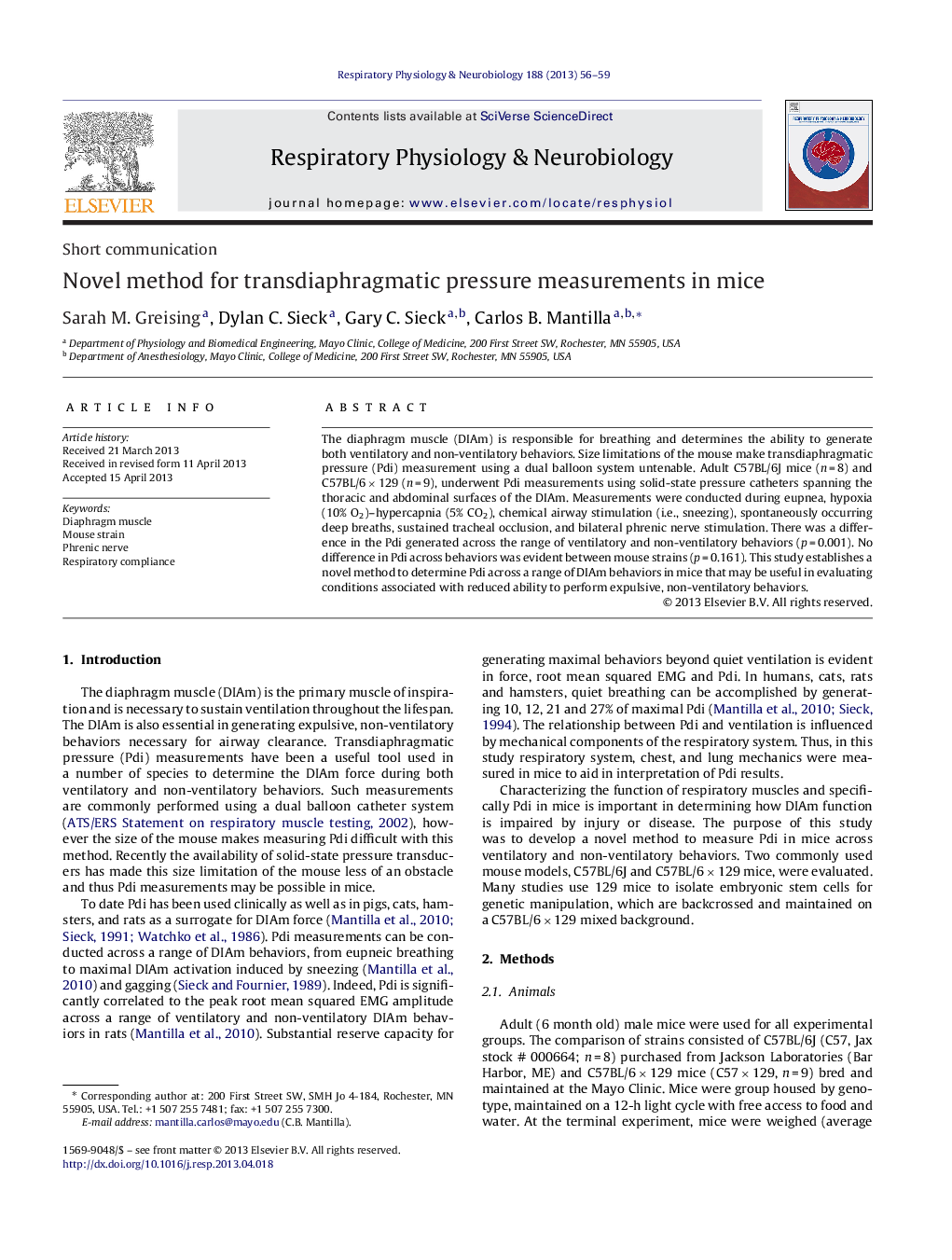| Article ID | Journal | Published Year | Pages | File Type |
|---|---|---|---|---|
| 5926207 | Respiratory Physiology & Neurobiology | 2013 | 4 Pages |
Abstract
The diaphragm muscle (DIAm) is responsible for breathing and determines the ability to generate both ventilatory and non-ventilatory behaviors. Size limitations of the mouse make transdiaphragmatic pressure (Pdi) measurement using a dual balloon system untenable. Adult C57BL/6J mice (n = 8) and C57BL/6 Ã 129 (n = 9), underwent Pdi measurements using solid-state pressure catheters spanning the thoracic and abdominal surfaces of the DIAm. Measurements were conducted during eupnea, hypoxia (10% O2)-hypercapnia (5% CO2), chemical airway stimulation (i.e., sneezing), spontaneously occurring deep breaths, sustained tracheal occlusion, and bilateral phrenic nerve stimulation. There was a difference in the Pdi generated across the range of ventilatory and non-ventilatory behaviors (p = 0.001). No difference in Pdi across behaviors was evident between mouse strains (p = 0.161). This study establishes a novel method to determine Pdi across a range of DIAm behaviors in mice that may be useful in evaluating conditions associated with reduced ability to perform expulsive, non-ventilatory behaviors.
Related Topics
Life Sciences
Biochemistry, Genetics and Molecular Biology
Physiology
Authors
Sarah M. Greising, Dylan C. Sieck, Gary C. Sieck, Carlos B. Mantilla,
